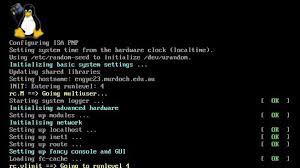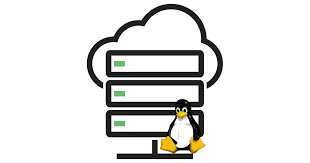Unleashing the Potential of Kali Linux OS: A Cybersecurity Powerhouse
The Power of Kali Linux OS
Kali Linux is a powerful and versatile operating system designed for digital forensics and penetration testing. Originally developed by Offensive Security, Kali Linux has gained popularity among cybersecurity professionals, ethical hackers, and enthusiasts due to its comprehensive suite of tools and robust security features.
One of the key features of Kali Linux is its focus on security testing. The operating system comes pre-installed with a wide range of tools that allow users to assess the security of networks, applications, and systems. From vulnerability analysis to password cracking and wireless attacks, Kali Linux provides the tools needed to identify and address security weaknesses.
Moreover, Kali Linux is known for its ease of use and flexibility. Whether you are a seasoned cybersecurity professional or a beginner looking to learn more about ethical hacking, Kali Linux offers a user-friendly interface and extensive documentation to support your journey. The operating system can be run from a live CD or USB drive, making it convenient for testing without affecting your primary system.
Additionally, Kali Linux receives regular updates and new tool releases to ensure that users have access to the latest technologies in cybersecurity testing. The active community around Kali Linux provides support, tutorials, and resources for users at all levels.
In conclusion, Kali Linux stands out as a leading choice for individuals and organisations seeking a reliable platform for security testing and ethical hacking. With its comprehensive toolset, strong focus on security, and active community support, Kali Linux continues to empower users in their efforts to secure digital assets and enhance cybersecurity awareness.
Essential Tips for Maximising Security and Efficiency in Kali Linux
- Ensure you regularly update Kali Linux to get the latest security patches and software updates.
- Familiarise yourself with the Kali Linux documentation to understand its features and how to use them effectively.
- Use strong and unique passwords for your Kali Linux system to enhance security.
- Backup your important data on a regular basis to prevent data loss in case of system issues or failures.
- Be cautious when using tools in Kali Linux as some can have unintended consequences if used improperly.
- Join the Kali Linux community forums or groups to seek help, share knowledge, and stay updated on developments.
- Consider setting up a separate user account with limited privileges for daily tasks to minimize potential security risks.
- Keep track of your network connections and monitor for any suspicious activities that could indicate a security breach.
Ensure you regularly update Kali Linux to get the latest security patches and software updates.
To ensure the optimal security and performance of your Kali Linux operating system, it is crucial to regularly update it to receive the latest security patches and software updates. By staying up-to-date with these updates, you can mitigate potential vulnerabilities and enhance the overall stability of your system. Keeping Kali Linux updated not only strengthens its defences against emerging threats but also ensures that you have access to the newest features and improvements that can enhance your cybersecurity capabilities. Regular updates are a proactive measure in maintaining a secure computing environment and safeguarding your digital assets effectively.
Familiarise yourself with the Kali Linux documentation to understand its features and how to use them effectively.
To make the most of Kali Linux, it is essential to familiarise yourself with the comprehensive documentation provided. By delving into the documentation, users can gain a deeper understanding of the operating system’s features and learn how to utilise them effectively. Whether you are exploring new tools for penetration testing or seeking guidance on security assessments, the Kali Linux documentation serves as a valuable resource to enhance your proficiency and maximise the benefits of this powerful operating system.
Use strong and unique passwords for your Kali Linux system to enhance security.
Using strong and unique passwords for your Kali Linux system is a crucial step in enhancing security. By creating passwords that are complex and unique to each account, you significantly reduce the risk of unauthorised access to your system. Strong passwords should include a mix of uppercase and lowercase letters, numbers, and special characters to make them harder to crack. Additionally, avoiding the reuse of passwords across multiple accounts further strengthens your system’s security posture. Implementing this simple yet effective tip can help safeguard sensitive information and protect your Kali Linux system from potential security threats.
Backup your important data on a regular basis to prevent data loss in case of system issues or failures.
It is crucial to back up your important data regularly when using Kali Linux OS to mitigate the risk of data loss in the event of system issues or failures. By maintaining up-to-date backups of your critical files and information, you can safeguard against unforeseen circumstances such as hardware malfunctions, software errors, or security breaches. Implementing a robust backup strategy ensures that your data remains secure and accessible, providing peace of mind and continuity in the face of potential disruptions.
Be cautious when using tools in Kali Linux as some can have unintended consequences if used improperly.
When utilising tools within Kali Linux, it is crucial to exercise caution and discretion, as some tools have the potential to yield unintended consequences if not used properly. Due to the nature of the operating system’s focus on security testing and ethical hacking, users must be mindful of the capabilities and implications of each tool they employ. Prioritising understanding and responsible usage can help mitigate risks and ensure that security assessments are conducted effectively and ethically within Kali Linux.
Join the Kali Linux community forums or groups to seek help, share knowledge, and stay updated on developments.
To maximise your experience with Kali Linux OS, it is highly recommended to engage with the vibrant Kali Linux community forums or groups. By joining these platforms, you can seek assistance when facing challenges, exchange valuable knowledge with like-minded individuals, and stay informed about the latest developments and updates within the realm of cybersecurity and ethical hacking. Embracing the collaborative spirit of the Kali Linux community will not only enhance your proficiency with the operating system but also foster connections with experts and enthusiasts who share your passion for digital security.
Consider setting up a separate user account with limited privileges for daily tasks to minimize potential security risks.
When using Kali Linux OS, it is advisable to create a separate user account with restricted privileges specifically for daily tasks. By doing so, you can minimise potential security risks and protect sensitive information from unauthorized access. This practice ensures that critical system settings and files remain secure, as the limited privileges of the user account prevent malicious actors from making significant changes or accessing sensitive data. Implementing this precautionary measure enhances the overall security posture of your system and helps safeguard against potential cyber threats.
Keep track of your network connections and monitor for any suspicious activities that could indicate a security breach.
To enhance the security of your Kali Linux OS, it is crucial to keep a vigilant eye on your network connections and actively monitor for any unusual or suspicious activities that may signal a potential security breach. By regularly tracking your network traffic and being alert to any anomalies, such as unauthorized access attempts or unusual data transfers, you can proactively identify and mitigate security threats before they escalate. Maintaining a proactive stance towards monitoring network connections is essential in safeguarding your system and data integrity within the dynamic landscape of cybersecurity threats.












